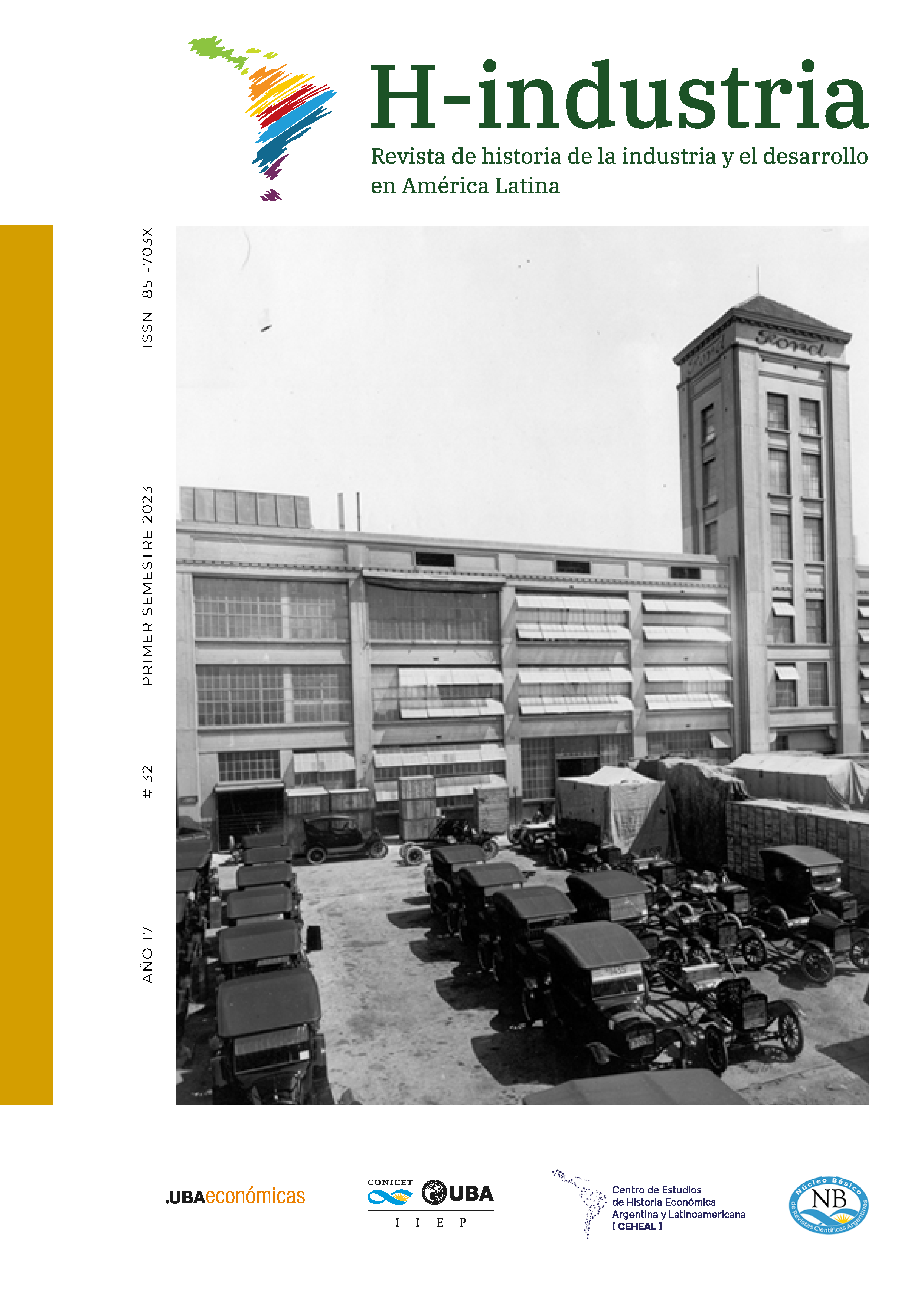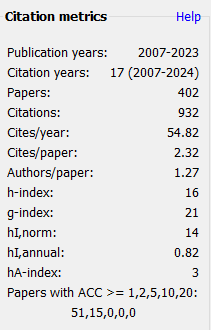Automatización, ocupaciones y tareas
Una mirada desde América Latina
Resumen
Los avances tecnológicos se han manifestado crecientemente a través de una mayor automatización en la realización de las tareas que se llevan a cabo en las diferentes ocupaciones. Si bien existe una abundante literatura para los países avanzados, resulta escasa aún la evidencia para los países de América Latina. En este documento se analiza para cuatro países –Chile, Ecuador, México y Perú– la composición del empleo en términos de ocupaciones y de tipo de tareas realizadas. Se evalúa la incidencia de actividades rutinarias y flexibles, manuales y cognitivas. Dimensiones como la informalidad laboral, el ingreso y el género son incluidas para visibilizar la heterogeneidad de situaciones que se observan en estos mercados de trabajo. Los trabajadores informales, mujeres, jóvenes, de menores calificaciones y menores ingresos son quienes desarrollan en mayor proporción tareas rutinarias y, por ende, su exposición a la automatización se eleva.
Descargas
Citas
Acemoglu, D. (1999). Changes in unemployment and wage inequality. An alternative theory and some evidence. American Economic Review, 85(5), 1259-1278
Apella, I. y Zunino, G. (2018). Nonstandard forms of employment in developing countries: A study for a set of selected countries in Latin America and the Caribbean and Eu-rope and Central Asia, Policy Research Working Paper, 8581. http://hdl.han-dle.net/10986/30426
Autor, D. H. 2015. Why are there still so many jobs? The history and future of workplace automation. Journal of Economic Perspectives, 29(3). https://economics.mit. edu/files/11563
Autor, D. H. (2019) Work of the past, work of the future, AEA Papers and Proceedings, 109, 1-32. DOI: 10.1257/pandp.20191110
Autor, D. H. y Dorn, D. (2013). The growth of low-skill service jobs and the polarization of the US labor market, American Economic Review, 103(5), 1553-1597. https://www.aea-web.org/articles?id=10.1257/aer.103.5.1553
Autor, D. H., Levy, F. y Murnane, R. (2003). The skill content of recent technological change: An empirical exploration. The Quartertly Journal of Economics, 118(4), 1279-1333. https://doi.org/10.1162/003355303322552801
Ballon, P. y Dávalos, J. (2020). Inequality and the changing nature of work in Peru. WIDER Working Paper Series, 168. https://doi.org/10.35188/UNU-WIDER/2020/925-9
Bessen J. 2017. Automation and jobs: When technology boosts employment. Working Paper 17-09, Law School, Boston University.
Bowles, J. (2014) The computerization of European jobs, Bruegel.
Brussevich, M., Dabla-Norris, E., Kamunge, C., Karnane, P., Khalid, S. y Kochhar, K. (2018). Gender, technology and the future of work. Staff Discussion Notes, International Monetary Fund. https://www.imf.org/en/Publications/Staff-Discussion-Notes/Is-sues/2018/10/09/Gender-Technology-and-the-Future-of-Work-46236
Brzeski, C. y Burk, I. (2015). The robots come. Consequences of automation for the German labour market. ING DiBa Economic Research
Bustelo, M., Flabbi, L., y Viollaz, M. (2019). The gender labor market gap in the digital econ¬omy. IDB Working Paper Series 1056.
Comisión Económica para América Latina y el Caribe. (2021). Datos y hechos sobre la transfor-mación digital (LC/TS.2021/2020). https://www.ce-pal.org/sites/default/files/publication/files/46766/S2000991_es.pdf
De la Rica, S., L. Gortazar y P. Lewandowski (2020) Job tasks and wages in developed coun-tries: Evidence from PIAAC. Labour Economics, 65I. DOI: 10.1016/j.labeco.20 20.101845
Frey, C. y Osborne, M. (2017). The future of employment: how susceptible are jobs to com-puterizationion. Technological forecasting and social change, 144, 254-280. https://doi.org/10.1016/j.techfore.2016.08.019
Grundke, R., Jament, S., Kalamova, M., Keslair, F. y Squicciarini, M. (2017). Skills and global value chains: A characterization. OECD Science, Technology and Industry Working Papers, 2017/05. https://doi.org/10.1787/cdb5de9b-en
Hardy, W., Lewandowski, P., Park, A., y Yang, D (2018). The global distribution of routine and non-routine work. IBS Working Paper 05/2018 https://confer-ence.iza.org/conference_files/WoLabConf_2018/lewandowski_p9882.pdf
Goos, M., Manning, A. y Salomons, A. (2014). Explaining job polarization: Routine-biased technological change and offshoring. American Economic Review, 104(8), 2509-2526. https://www.aeaweb.org/articles?id=10.1257/aer.104.8.2509
Lewandowski, P., Park, A., Hardy, W. y Yang, D. (2019). Technology, skills, and globaliza-tion: Explaining international differences in routine and nonroutine work using sur-vey data. IZA Discussion Papers. https://www.iza.org/publica-tions/dp/12339/technology-skills-and-globalization-explaining-international-differ-ences-in-routine-and-nonroutine-work-using-survey-data
Maloney, W. y Molina, C. (2016). Are automation and trade polarizing developing country labor markets, too?. Policy Research Working Paper, 7922. http://hdl.han-dle.net/10986/25821
Maurizio, R. y Monsalvo, A.P. (2021). Changes in occupations and their task content: Impli-cations for employment and inequality in Argentina, 2003-19. WIDER Working Paper (2021/15). https://doi.org/10.35188/UNU-WIDER/2021/949-5
McAfee, A. y Brynjolfsson, E. (2014) The second machine Age: Work, progress and prosperity in a time of brilliant technologies. W.W. Norton & Company.
McIntosh, S. (2013) Hollowing out and the future of the labour market. BIS research paper, no. 134, BIS, https://www.gov.uk/government/uploads/system/uploads/attachment_ data/file/250206/bis-13-1213-hollowing-out-and-future-of-the-labour-market.pdf.
Messina, J., G. Pica y A. M. Oviedo. (2016). Job polarization in Latin America. Inter-American Development Bank.
Messina, J. y J. Silva (2018). Wage inequality in Latin America. Understanding the past to prepare for the future. International Bank for Reconstruction and Development/The World Bank.
Nübler, I. (2016). New technologies: a jobless future or golden age of job creation?, International Labour Office.
Organisation for Economic Co-operation and Development (2016). Survey of Adult Skills Technical Report (2nd Edition). OECD.
Pajarinen, M. y Rouvinen, P. (2014). Computerization threatens one third of finnish employ¬ment, ETLA Brief, 22 https://www.etla.fi/wp-content/uploads/ETLA-Muistio-Brief-22.pdf
Programme for the International Assessment of Adult Competencies PIAAC (2014 y 2017). Survey of adult skills, OCDE. https://www.oecd.org/skills/piaac/data/
Schwab, K. (2016). The fourth industrial revolution, World Economic Forum.
Vivarelli, M. (2007). Innovation and employment: a survey, IZA Discussion Paper No. 2621.
Weller, J. (2020). Las transformaciones tecnológicas y el empleo en América Latina: oportu-nidades y desafíos. Revista de la CEPAL, 130.
Zapata-Román, G. (2021). The role of skills and tasks in changing employment trends and income inequality in Chile. WIDER Working Paper (2021/48). https://doi.org/ 10.35188/UNU-WIDER/2021/986-0
Aquellos autores/as que tengan publicaciones con esta revista, aceptan los términos siguientes:
- Los autores/as conservarán sus derechos de autor y garantizarán a la revista el derecho de primera publicación de su obra, el cuál estará simultáneamente sujeto a la Licencia de reconocimiento de Creative Commons Atribución-NoComercial-CompartirIgual 4.0 Internacional (CC BY-NC-SA 4.0) que permite a terceros copiar y redistribuir el material en cualquier medio o formato y adaptar — remezclar, transformar y construir a partir del material bajo la la misma licencia del original. En todos los casos, debe dar crédito de manera adecuada.
- Los autores/as podrán adoptar otros acuerdos de licencia no exclusiva de distribución de la versión de la obra publicada (p. ej.: depositarla en un archivo telemático institucional o publicarla en un volumen monográfico) siempre que se indique la publicación inicial en esta revista.
- Se permite y recomienda a los autores/as difundir su obra a través de Internet (p. ej.: en archivos telemáticos institucionales o en su página web) antes y durante el proceso de envío, lo cual puede producir intercambios interesantes y aumentar las citas de la obra publicada. (Véase El efecto del acceso abierto).
 Esta obra está bajo una Licencia Creative Commons Atribución-NoComercial-CompartirIgual 4.0 Internacional.
Esta obra está bajo una Licencia Creative Commons Atribución-NoComercial-CompartirIgual 4.0 Internacional.




